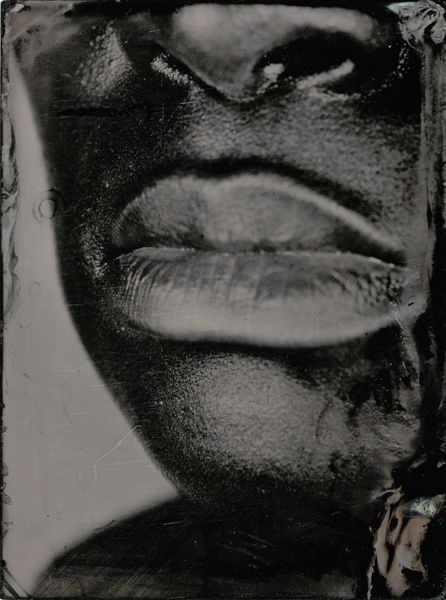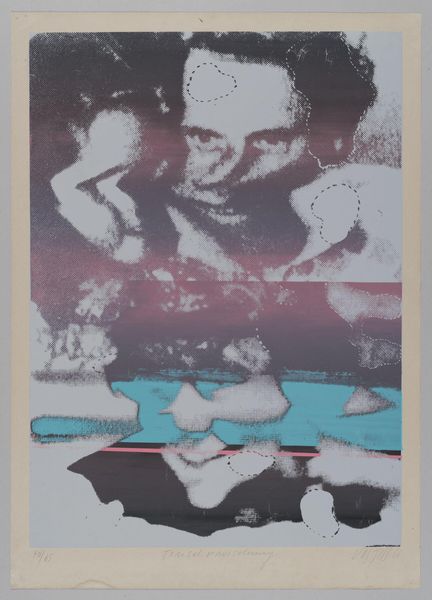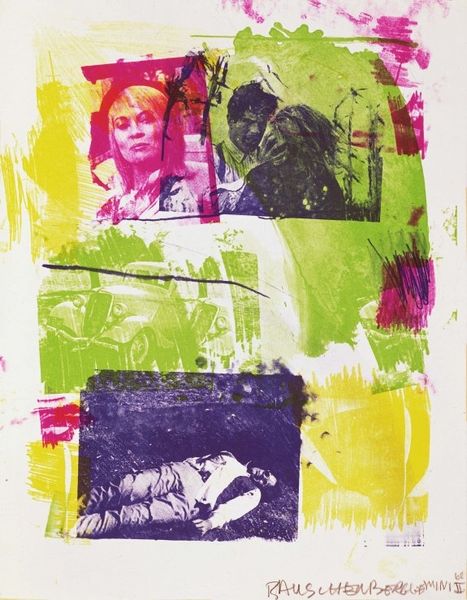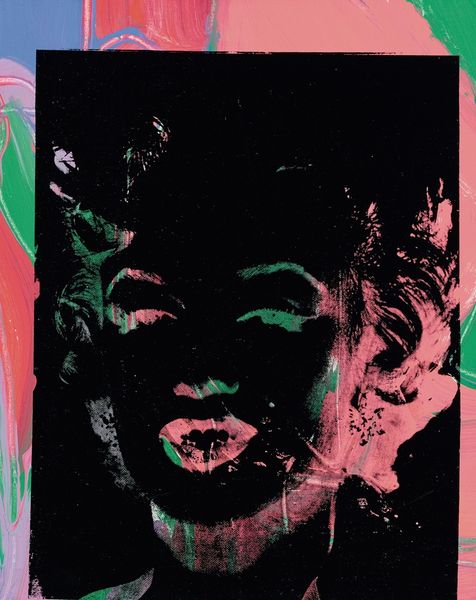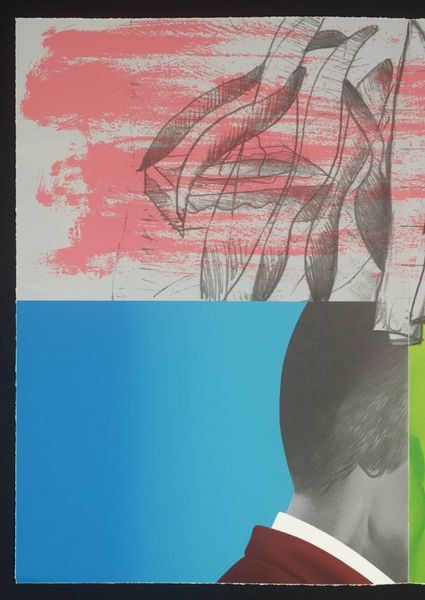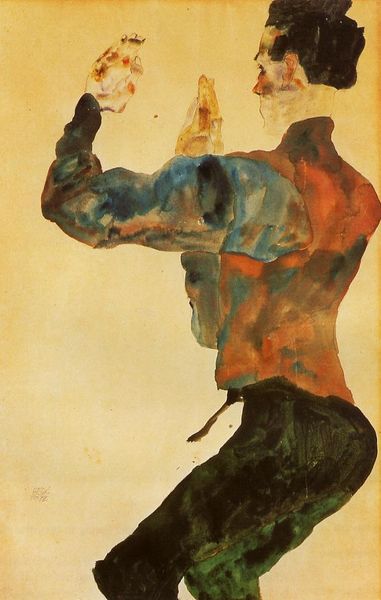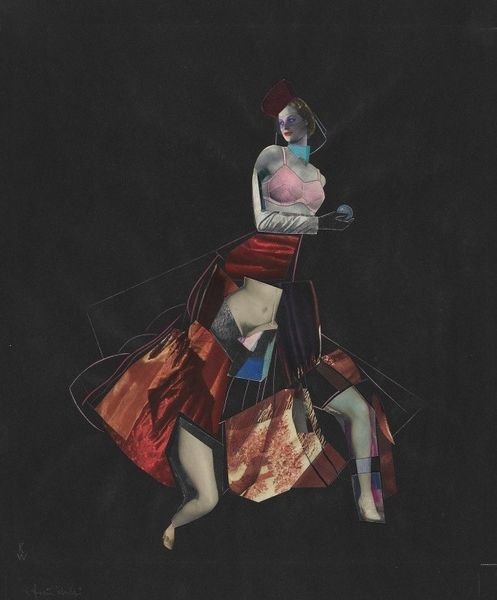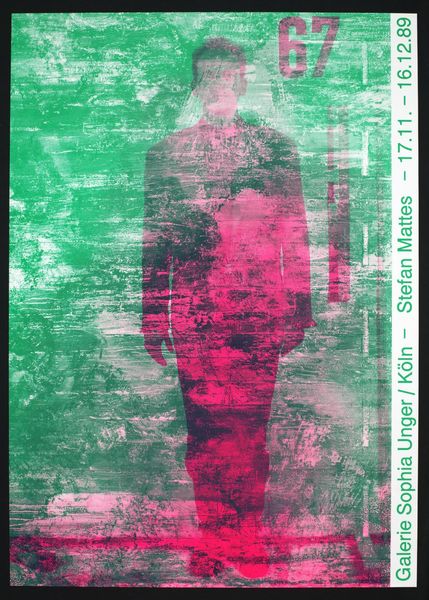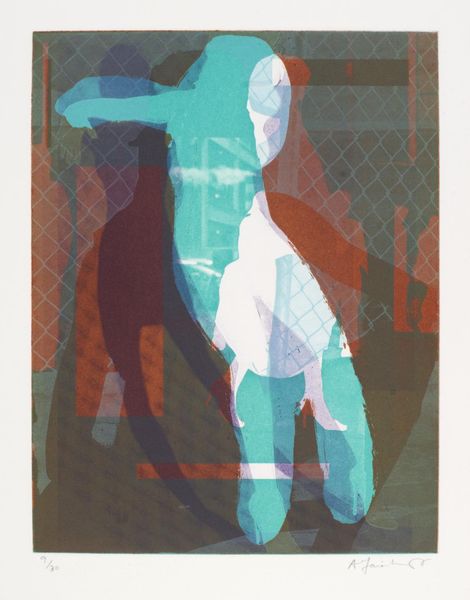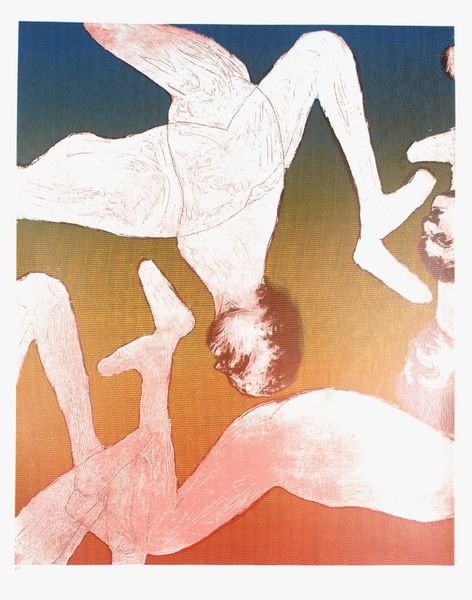
Dimensions: sheet: 27.8 x 20.3 cm (10 15/16 x 8 in.)
Copyright: National Gallery of Art: CC0 1.0
Curator: Robert Heinecken created "Simmons Beauty Rest" in 1971. It's a photomontage incorporating, I believe, magazine advertisements, and other found imagery. What's your immediate take? Editor: Stark. It's unsettling. Juxtaposing the seemingly innocent, vintage mattress ad with such brutal imagery creates a really disturbing contrast. The color palette feels faded, lending it a gritty, almost dreamlike quality, if you could call a nightmare a dream. Curator: The title is pure irony, right? “Beautyrest,” when what we’re seeing challenges conventional notions of beauty, rest, even comfort. There is a blatant appropriation of commercial imagery, critiquing its inherent superficiality and latent violence. Editor: Absolutely. The ad presents this image of compliant female sexuality with Senta Berger, while the dark figure dominating the composition is carrying severed heads. It's as if Heinecken is using the visual language of advertising against itself, exposing a darker undercurrent in our consumer culture. He clearly references racial violence. This poses a question: Is this image a historical record of white-on-black violence, or does it reflect more contemporary exploitation? Curator: Exactly! And this makes us think about the commodification of bodies – the woman's body used to sell mattresses, contrasted with the horrific dehumanization represented by the severed heads. There's a racial dimension here, a commentary on power dynamics and representation within media and popular culture. What were his institutional surroundings when he created such an image? Editor: The late 60s and early 70s were explosive years in US history; with events such as the Vietnam war, the fight for Civil Rights, and the burgeoning Feminist Movement it can be argued that, for the first time, what was considered "mainstream" in society came into question. Also, consider the art world – Pop Art, Conceptual Art, appropriation strategies became very important to highlight new social contexts, which gives some context for Heinecken's exploration with photomontage. Curator: And in that light, Heinecken used this work to confront the viewer, and I think it questions the ways in which advertising participates in the normalization of violence and the perpetuation of harmful stereotypes, thus complicating, revealing and interrogating it. Editor: Ultimately, "Simmons Beauty Rest" remains a provocative artwork because it refuses to let us passively consume images. It demands we confront the uncomfortable realities embedded within our visual landscape and how our collective anxieties about gender and race might reveal our understanding of art history.
Comments
No comments
Be the first to comment and join the conversation on the ultimate creative platform.
